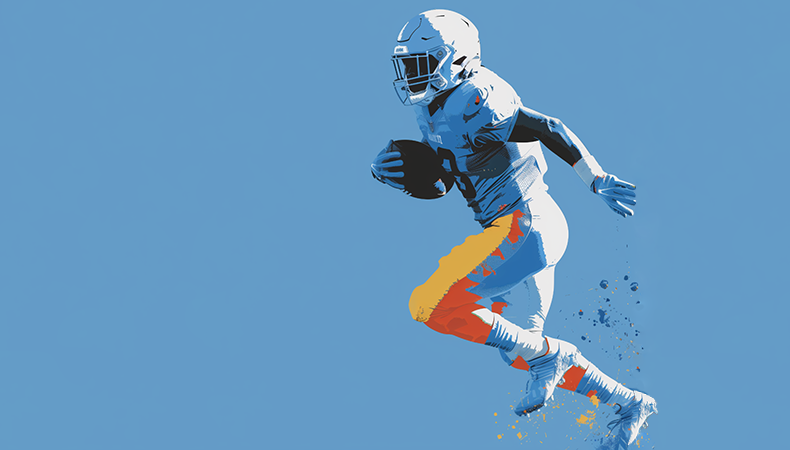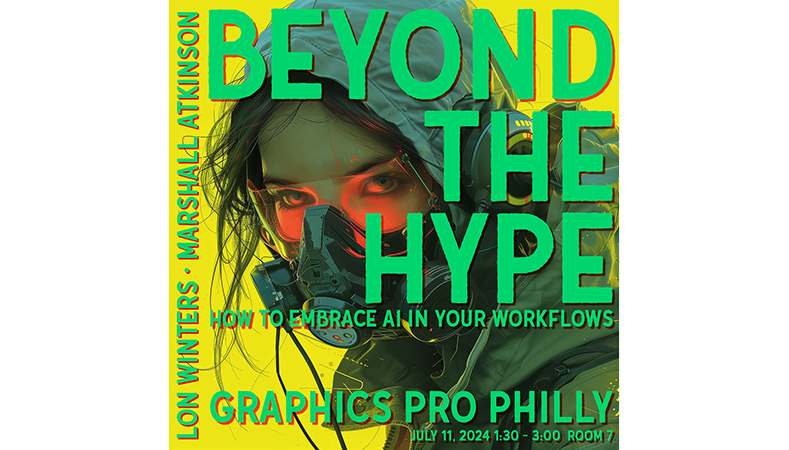The Midjourney experience: creating AI generated images for print
_credit_Midjourney_789x450.png?width=750)
We speak with Midjourney expert Marshall Atkinson about some of the frequently asked questions printers have around the practical considerations of using AI-generated images.
What are the business cases for using AI-generated imagery?
I can answer that with an age-old phrase: ‘Time is money.’ Think: how long does it normally take you to design an image? I’m currently writing an article for my newsletter about surrealism and I wanted to create some surrealistic images. In Midjourney, I used the prompt: ‘earth, wind, fire natural elements’ and within 45 seconds I received a wide range of surreal images based on that prompt. If somebody was to draw these by hand, it would take ages.
![]()
These images do not take away an illustrator’s talent or effort. However, sometimes people do not have the time to wait for an image to be manually drawn. If you can achieve the desired end result faster, that means you can be doing more things and that allows us to scale production up. So now, instead of lacking the time for marketing or building a catalogue, staff can focus on other areas of the business.
Are images produced by Midjourney good enough to print?
The first thing to understand is that Midjourney creates raster files rather than vector files. Anything that is created in Midjourney is a 72dpi file – it doesn’t get any higher and it doesn’t get any lower, it’s always 72dpi – and then the resolution is 1024 x 1024 if you are using a square image.
That’s okay but it’s not perfect, so if you are going to use any images generated from Midjourney, it is important to use an upscaled file, this can be achieved with a simple button-click command in Midjourney. It’ll still be a 72dpi file but it’ll be twice the size at 2048 x 2048. That means there are more pixels in the image, so it is a much cleaner file, and when you import it to Photoshop, you can rescale or resize it.
You could upscale the image and use a programme like Gigapixel to really boost the resolution if that’s required. You can also bring it into other files, such as Tracejourney or similar, and you can vectorise any image. That way you don’t have to be resolution-dependent at all.
Therefore, the file used is heavily dependent on your skill level and what you’re doing with it. For me, the files that you get from Midjourney are not meant to be perfect, but they are meant to be a great starting point from which you can create the desired end result that you are going to use. Midjourney gets you around 95% there – then you can start editing the image to make it your own and exactly how you require it to be.
Are there any common imperfections?
I recently created an image of a wolf that featured little white marks here and there, or a random bit of hair on an ear that I edited to make it look better. A normal person might not notice those things, but if you are observant and you are determined to create the image in your preferred style it is important to fix these small things. So, as a designer, it is likely you will want to make the generated image your own.
Midjourney can seem incompetent regarding text and lettering. How can printers avoid this?
I recently created a series of promotional posters for a lecture that I will be giving at a trade show. Normally the images for those posters would take hours but with Midjourney it took minutes; it was the rest of the work on those posters, like putting the type together, that took time.

Unfortunately, Midjourney does a very mediocre job of using text – it’s not designed to be used for that. I generally don’t use text in Midjourney with my projects because it’s very complex for Midjourney to understand. Plus, I want to pick the fonts, the kerning, the outline and drop shadow; this provides me greater control of the end result.
In Midjourney you can’t control these factors. Therefore, I import my Midjourney images into another tool, and use that to apply text. The current version of Midjourney 6 does have its limitations; however, in future versions such as Midjourney 22 it may have evolved to be used perfectly for text.
Speaking of improvements, what do you think about the ‘uncanny valley’ look of AI images? Will this be surpassed or is that already happening?
Several images that Midjourney and other AI tools create are great and can be used as they are, but it is important to take into consideration that you cannot use it for the final product. You, as the designer, decide the final product. You might recolour or delete aspects of the image.
When it comes to people who are trying to create a very complex image, I would advise the following: create two or three of the elements of your design separately and then combine them in Photoshop. That way you are going to have more control over the final result.
For example, if you wanted to create a tropical bar-themed T-shirt with a parrot and a sunset and a sailboat and on the bar is a glass of beer. If you write the Midjourney prompt for that, it might take a long time to get exactly what you want. But if you write the prompts for the individual elements and then put them together yourself, you’ll have a far easier time.
Where can Midjourney be used outside of commercial graphics?
It can be used everywhere and can be seen in fabric patterns, home décor and interior design. Both architects and product designers are using it.
You can be very innovative when using this platform. For example, if you want a grid of blue lines on a background, it can do that. If you want a stained concrete texture, or a panel of teak wood as a background, it can do that. Before, you would have had to find the wood and photograph it or find stock photography and buy it. Now you don’t have to do any of that – you can create the image you need.
What about the accusation that, by using AI, you’re stealing somebody else’s work?
If you take the images that Midjourney makes and do a Google reverse search, you’ll find those images don’t exist anywhere else.
Midjourney takes the prompts you provide and generates images based on those words. Midjourney knows what blue is, it knows what a horse is, and it knows what a cartoon style is, so when you ask for a blue cartoon horse, it creates it. It doesn’t search the internet to find an image of a blue cartoon horse that already exists. It does not copy and paste.
On the other hand, in the US, because the image is AI-generated, it cannot be copyrighted. Unfortunately, a challenge for designers is that their work can be very costly to copyright. But if you are creating a company logo in Midjourney, it’s important to know that it is not copyrightable.
Therefore it is important to be aware of the laws around its use and, if you’re potentially going to use it while serving a client, there are ethical considerations about letting the client know.
Finally, for people who aren’t scared to use it, but who perhaps don’t have the background expertise of designers, what advice would you give?
You have to approach using AI as you would if you were a four-year-old child with a new box of crayons. Don’t be scared of making a mistake.
Whatever prompt you put in; you will get a result of some sort. For example, I discovered the word ‘hypermaximalist’ and wondered what it might do as a Midjourney prompt. I used it on a sports figure (see the main image at the top of this article) and was pleased with the results, as it blended a good sense of dynamic action to the image. The more you experiment and play with Midjourney, the easier it will be to get the results you want.
So, the secret in achieving the results you desire is to pay close attention to the words you use to describe the subject and not the subject itself. It is beneficial if you have a clear idea in mind of the end goal when it comes to a specific project. Sometimes you need to put a bit of effort in, but not necessarily a lot of time because – remember – ‘Time is money.’
More Midjourney advice
To find out more about Midjourney use, visit Marshall’s website.
And read Marshall’s Midjourney Experience: Elevate Print Creativity newsletter.
Become a FESPA member to continue reading
To read more and access exclusive content on the Club FESPA portal, please contact your Local Association. If you are not a current member, please enquire here. If there is no FESPA Association in your country, you can join FESPA Direct. Once you become a FESPA member, you can gain access to the Club FESPA Portal.
Topics
Recent news

Regulation guidance: Corporate Sustainability Reporting Directive
The Corporate Sustainability Reporting Directive (CSRD) is now in effect, but with further changes on the horizon, what does it mean for printers? Sustainability consultant Rachel England outlines everything you need to know and talks to Apigraf about how your business may be affected.

Web-to-print design: Canva versus Kittl
We look at popular design packages Canva and Kittl to determine how they compare regarding graphic design and print on demand.

FESPA in South Africa: the print skills to thrive
Printing SA’s Career Day inspired young Cape Town learners to explore printing and packaging careers.

The rise of Chinese printers
Chinese printing companies are on the rise, and have their eyes set on the UK and EU marketplace. Some have made an instant impact; others are running into issues with maintenance and language barriers. What does the future hold for Chinese printing firms, and how can you navigate working with them?